Feeling burnt out at work? You’re not alone. In fact, a recent Gallup study found that 76% of employees experience burnout at least some of the time. It’s more than just being tired—burnout affects your mental health, physical well-being, and your overall ability to get things done.
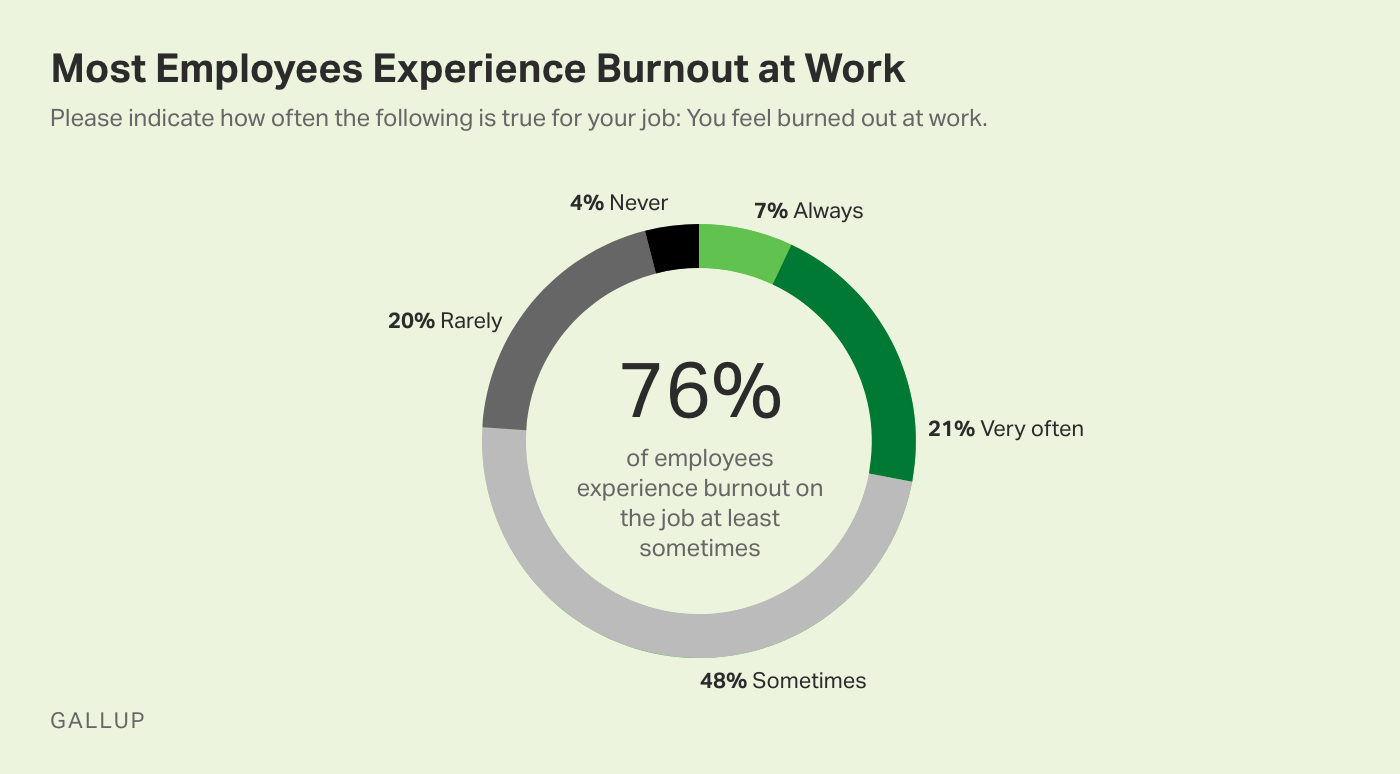
You’re probably feeling like no matter how hard you work, you’re stuck in a cycle of exhaustion, stress, and a lack of motivation.
But here’s the deal: burnout doesn’t mean you’re lazy or bad at your job. It means something in your work-life balance is off. And the good news? You can fix it.
In this post, you’ll find actionable steps to take that don’t require quitting your job or a complete life overhaul. Let’s dive in and get you back on track.
What Is Burnout From Work?
Burnout isn’t just about feeling tired—it’s way deeper than that. It’s when the stress and pressure at work build up so much that you hit a wall emotionally, mentally, and even physically. It’s that feeling of waking up and not being able to muster the energy to tackle even simple tasks, or worse, feeling completely detached from your work.
The World Health Organization classifies burnout as an “occupational phenomenon,” and it’s happening to more people than you might think.
So, how do you know if you’re burnt out? It doesn’t always hit you all at once. The signs sneak up on you—chronic fatigue, irritability, trouble concentrating, or even physical symptoms like headaches and stomach issues. You start questioning the point of your work and feel like no matter how hard you push, it’s never enough.
The good news? There are ways to break out of the burnout cycle, and it starts by understanding what’s triggering it and making strategic changes—starting now.
Let’s dig deeper into the causes and solutions.
The Main Causes of Burnout
Let’s get real—burnout doesn’t happen overnight. It builds up over time, and more often than not, there are a few key drivers that push you over the edge. Understanding what’s causing your burnout is essential if you want to fix it.
1. Unmanageable Workload
Too much work, too little time. Sound familiar? When you’re constantly under pressure to do more with less, burnout becomes inevitable. And it’s not just about working long hours; it’s the mental load of knowing that the to-do list never ends.
Actionable Tip: Take control of your workload by communicating your limits. Don’t just say “I’m overwhelmed”—explain what specific tasks are taking up the most time and how shifting priorities could help you deliver higher quality work. It’s all about setting boundaries and managing expectations.
2. Lack of Control
Feeling like you have zero control over your workday? That’s a fast track to burnout. Whether it’s micromanagement or not having any say in decisions that affect you, a lack of autonomy creates stress.
Actionable Tip: Find small ways to regain control. Start by managing your own schedule, prioritizing tasks that align with your goals, and negotiating more decision-making power where you can. The more control you feel, the more energized you’ll be.
3. Not Enough Recognition
Let’s be honest, feeling undervalued at work stings. When you’re putting in effort day after day and no one acknowledges it, motivation tanks. It’s not uncommon for employees to quit their jobs due to a lack of appreciation as the main reason. Recognition isn’t just nice to have—it’s a burnout buffer.
I’ve experienced this myself. I’ve had a role in the past where no matter how well I performed, I never felt appreciated or recognized for my work. Needless to say, it demotivated me and didn’t make me excited to show up.
Fast forward to my current job, and it’s the complete opposite. I was recognized for my progress and performance from day one and continue to be. It’s an amazing feeling and inspires me to work harder every day. It makes a huge difference.
Actionable Tip: While it might feel uncomfortable, advocate for yourself. Ask for feedback and recognition where it’s deserved. If your workplace doesn’t prioritize this, find ways to celebrate your own wins—whether that’s journaling about your accomplishments or setting small, personal rewards.
The key to stopping burnout is identifying which of these applies to your situation and taking steps to address them head-on. It’s time to take back control of your work-life balance.
Steps to Combat Work Burnout Right Now
Burnout doesn’t go away by itself—you have to take action. And the good news? You don’t need to overhaul your entire life to start feeling better. A few strategic changes can have a huge impact on your mental and physical health. Let’s dive into actionable steps you can take today to stop feeling burnt out at work.
1. Prioritize Self-Care (Seriously)
Yeah, you’ve heard it before. But let’s be real—most people are terrible at self-care, especially when they’re burnt out. It’s easy to skip meals, ignore sleep, and convince yourself you don’t have time for a break. But here’s the truth: without taking care of yourself, you’ll never have the energy or clarity to perform at your best. A study published by Harvard Business Review found that taking regular breaks increases productivity and helps to reduce burnout.
Actionable Tip: Start small. Block out 15-minute breaks in your calendar every day and stick to them like they’re meetings. Use that time to unplug—no emails, no work. Go for a walk, practice deep breathing, or grab a snack. It’ll reset your brain and prevent mental fatigue from taking over.
2. Master Time Management
When your to-do list feels endless, it’s a recipe for stress. But often, the problem isn’t the workload—it’s the way it’s managed. Poor time management leads to procrastination, overwhelm, and ultimately burnout.
Actionable Tip: Use time-blocking. Set aside specific chunks of your day for deep work, meetings, and even breaks. Break large tasks into smaller, manageable parts and prioritize what really moves the needle. Tools like the Pomodoro Technique or apps like Trello and Asana can help you stay on top of things without feeling swamped.
You can also watch my video on this topic.
3. Have That Tough Conversation with Your Employer
Let’s face it—sometimes, your workload or the expectations set by your boss are simply too much. Ignoring the problem only makes it worse. Having open conversations about workload can significantly reduce stress and improve job satisfaction.
Actionable Tip: Schedule a meeting with your manager. Come prepared with data—how many hours you’re working, what tasks are consuming the most time, and what’s suffering because of the overload. Be solution-oriented.
Propose how priorities can shift, whether it’s delegating tasks, adjusting deadlines, or exploring flexible work hours. Your boss may not realize the extent of your workload until you point it out.
4. Build a Support System
You don’t have to do this alone. Burnout can feel isolating, but chances are you’re not the only one going through it. According to BMC Psychiatry, having a strong support network—whether that’s friends, family, or colleagues—plays a key role in reducing the emotional toll of burnout.

Actionable Tip: Find someone to talk to about what you’re going through. It could be a co-worker, a friend, or even a professional coach or therapist. If there’s an employee support group at your workplace, join it. Sometimes, just having someone to vent to can make all the difference.
For example, my friends and I hold a mastermind every month. We meet up to talk about our goals, challenges, and help each other grow. I always leave feeling incredibly uplifted and positive!
Preventing Work Burnout in the Future
You’ve learned how to combat burnout, but let’s talk prevention. The key to avoiding burnout isn’t waiting until you’re on the edge; it’s setting up systems that keep you balanced in the first place.
Here’s how to build a sustainable routine that helps you stay energized and productive—without hitting the burnout wall again.
1. Set Boundaries and Stick to Them
Work-life balance isn’t just a buzzword. It’s essential if you want to stay healthy and motivated long-term. But here’s the thing—balance doesn’t happen automatically. You have to actively create boundaries around your work.
Actionable Tip: Start by defining your “non-negotiables.” This could mean no work emails after 6 p.m., not working on weekends, or taking a full lunch break away from your desk. Communicate these boundaries clearly to your boss and colleagues. And here’s the important part—stick to them. Boundaries are only effective if you enforce them.
2. Redefine Success
Burnout often comes from unrealistic expectations and the constant chase for perfection. If you’re constantly aiming for the next promotion, the next raise, or the next win, you’re going to burn out. The truth is, success isn’t just about achieving more; it’s about finding balance, fulfillment, and sustainability in your career.
Actionable Tip: Reframe success in a way that serves you. Set goals that focus on personal well-being, learning, and growth—not just career milestones. Celebrate small wins along the way and recognize that it’s okay not to be “on” all the time. Success is a marathon, not a sprint.
3. Build Resilience Through Daily Habits
Burnout often happens because we lack the emotional and physical resilience to handle stress. Resilience isn’t just about pushing through—it’s about cultivating habits that strengthen your ability to cope with challenges.
Actionable Tip: Build resilience with simple daily habits. Start a morning routine that includes mindfulness or journaling to set a positive tone for the day. Incorporate movement into your day, whether it’s a 10-minute stretch or a full workout. Small, consistent habits add up over time and make you more resilient to stress.
4. Regularly Review and Adjust Your Workload
Burnout isn’t a “set it and forget it” problem. You need to regularly check in with yourself to make sure your workload stays manageable. The most successful people are constantly reviewing their tasks, priorities, and energy levels to ensure they’re working efficiently—not just harder.
Actionable Tip: Schedule a monthly check-in with yourself. Review your current workload and assess whether it’s aligned with your priorities. Are there tasks you can delegate? Are you spending too much time on low-impact work? This monthly review will help you keep things in check before burnout has a chance to creep back in.
Prevention is all about setting yourself up for long-term success. By creating clear boundaries, redefining success, building resilience, and regularly reviewing your workload, you’ll have a system that helps you stay productive and fulfilled without sacrificing your well-being.
Long-Term Solutions for a Healthier Work Environment
Addressing burnout isn’t just about what you do individually—it’s also about the environment you’re working in. If your workplace culture is toxic or unsupportive, no amount of personal self-care is going to make burnout go away completely.
Long-term prevention means creating or advocating for a healthier work environment that supports your well-being. Let’s break down how to make that happen.
1. Advocate for a Better Workplace Culture
Here’s the thing: toxic work cultures breed burnout. If you’re working in an environment that values hustle over health, you’re going to burn out, period. Research by Zippia shows that 77% of employees have experienced burnout in their current job, and workplace culture is often the root cause. If your workplace doesn’t support balance or mental health, it’s time to start advocating for change.
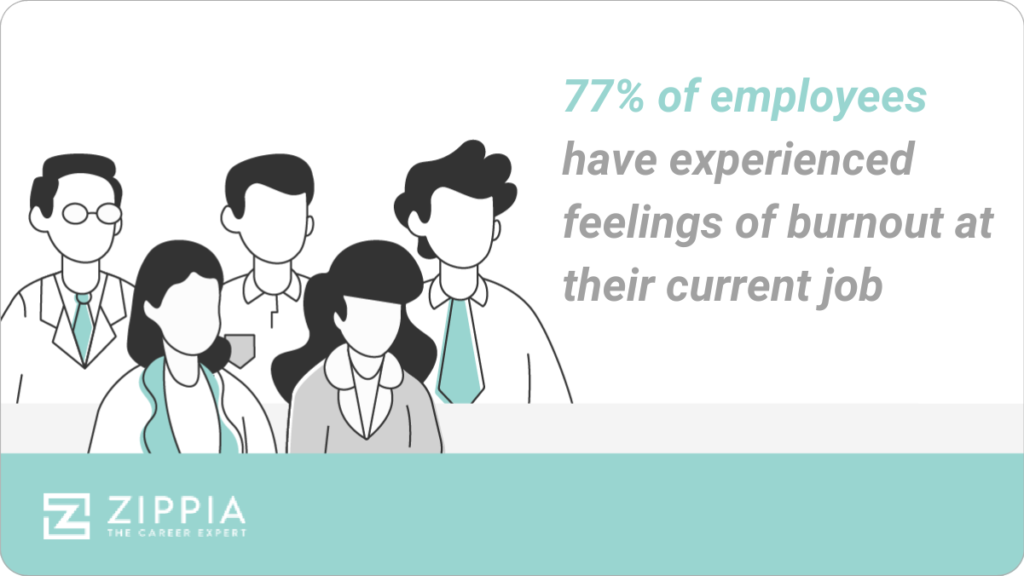
Actionable Tip: Start small but be vocal. Push for mental health initiatives, like flexible work hours or wellness programs. If your company doesn’t have these yet, gather feedback from colleagues and approach management with a solid plan.
When leadership sees that employees want change, they’re more likely to act. Advocate for open discussions about workload, stress management, and mental health.
2. Push for Flexibility
Rigid schedules and expectations are often a big driver of burnout. Many companies are moving toward flexible work models, which give employees more control over when and where they work.
Actionable Tip: Talk to your manager about ways to build more flexibility into your workday. Whether it’s working from home a couple of days a week or having more autonomy over your schedule, these small shifts can make a huge difference. When you have control over your time, you can better manage stress and avoid the constant grind that leads to burnout.
3. Encourage Open Communication
Burnout thrives in silence. If people aren’t talking about it, the problem grows until it’s too late. Open communication is key to preventing burnout on a team or company-wide level. When employees feel comfortable discussing their workload, mental health, or stress levels, leaders can step in early and offer solutions.
Actionable Tip: If your workplace doesn’t already encourage open dialogue, be the one to start it. Set up regular check-ins with your manager to discuss your workload, stress levels, and ways to improve. If you’re in a leadership role, make it a priority to ask your team how they’re doing and how you can support them. It’s all about fostering an environment where people feel safe to speak up before burnout becomes a crisis.
4. Know When to Make a Bigger Change
Sometimes, despite your best efforts, the work environment just isn’t right for you. If you’ve tried setting boundaries, managing stress, and advocating for change and nothing improves, it might be time to consider a career shift.
Actionable Tip: Start by evaluating whether your current job or company is aligned with your long-term goals and well-being. If it’s not, begin exploring other opportunities that better support your mental health. Career changes are big decisions, but if your environment is toxic, making a move might be the best way to protect your health and happiness.
Creating a healthier work environment isn’t just a personal responsibility—it’s a collective effort. Advocate for better policies, push for flexibility, and open up conversations around burnout in your workplace.
Consider a Career Shift if Necessary
Sometimes the reality is simple: you’re in the wrong job. And no amount of productivity hacks or self-care routines will fix that. If you’ve tried everything—set boundaries, managed your workload, had the tough conversations—and you’re still feeling burnt out, it might be time to reassess your career.
It’s very common too. 78% of people between 25-44 are looking to switch jobs.

I remember when my friend was extremely stressed about their job in real estate. They would wake up every with dread knowing they had to face their company and colleagues. After a few years of that, they finally made the plunge and jumped to another company.
His happiness and satisfaction drastically improved and he was no longer stressed. Sometimes it’s not the job, it’s the company.
1. Evaluate Your Current Role
Ask yourself the hard questions: Does your job align with your values? Are you excited about the work you’re doing? Or are you just sticking it out because it feels safe? The truth is, staying in a job that’s draining you will only make burnout worse. If you’re not aligned with the mission, the culture, or the work itself, it’s time to rethink your next steps.
Actionable Tip: Start by making a pros and cons list of your current role. What do you enjoy? What’s causing the most stress? Seeing it on paper can provide clarity and help you determine if it’s time for a change. If the cons outweigh the pros, it’s probably time to start exploring new opportunities.
2. Identify New Opportunities
You don’t need to have all the answers immediately. But it’s smart to start exploring what’s out there. Maybe you need a different role within your company, or maybe it’s time to switch industries altogether.
Actionable Tip: Set aside time each week to research new roles or industries that might excite you. Tap into your network, attend industry events, or take online courses that align with the career shift you’re considering. Even dedicating 30 minutes a day can open doors and help you clarify your next move.
3. Plan Your Exit Strategically
Let’s be real, quitting on impulse without a backup plan isn’t always the smartest move. But that doesn’t mean you need to stay stuck. If you’re ready for a career change, make a strategic exit plan. This means lining up your next opportunity, saving a financial cushion, and making sure you leave on good terms.
Actionable Tip: Set a timeline for your transition. Maybe it’s six months, maybe it’s a year. During that time, build your skills, update your resume, and start networking in the field you want to enter. Having a clear timeline will help you stay focused and reduce the anxiety that comes with big career shifts.
4. Prioritize Your Mental Health in the Transition
Career changes can be stressful, but the payoff is worth it. Burnout doesn’t magically disappear with a new job—it requires ongoing care and attention. When planning your next career move, make sure the new role supports your mental well-being and long-term goals.
Actionable Tip: Before accepting a new job, evaluate the company’s culture, work-life balance policies, and management style. Ask about flexibility, mental health support, and team dynamics during interviews. A career shift should lead you toward a healthier, more fulfilling work life—not just more of the same in a different place.
The Role of Rest and Recovery in Avoiding Burnout
Here’s something a lot of people forget: rest is as important as hustle. You can’t keep pushing at full speed without stopping to refuel. And no, rest isn’t just about taking a week off once a year. It’s about integrating recovery into your daily and weekly routines.
1. Embrace the Power of Micro-Breaks
You don’t need a two-week vacation to reset. Research shows that short, intentional breaks throughout your workday can dramatically improve focus and reduce burnout. A study from the Journal of Occupational Health Psychology found that employees who took micro-breaks every hour experienced significantly less fatigue and greater job satisfaction.
Actionable Tip: Implement the Pomodoro Technique—work for 25 minutes, then take a 5-minute break. Repeat this cycle four times, then take a longer break. Use those short breaks to get away from your desk, stretch, or do something relaxing. It’s a small shift that can make a big difference in your energy levels.
2. Prioritize Sleep (Yes, It’s That Important)
We’ve all heard the advice, but most of us are still running on empty when it comes to sleep. Lack of sleep doesn’t just make you tired; it makes you less productive, more irritable, and, you guessed it, more prone to burnout.
Actionable Tip: Set a consistent bedtime and stick to it, even on weekends. Create a wind-down routine that helps you detach from work, like reading or meditating before bed. Aim for 7-9 hours of sleep—your productivity will skyrocket when you’re well-rested.
3. Unplug and Disconnect
Technology is one of the biggest culprits when it comes to burnout. Constant emails, Slack messages, and notifications mean you’re never truly “off.” If you’re always connected, your brain doesn’t get a chance to recharge.
Every now and then I like to get away from all of my devices and exercise, go for a walk, meditate, or read a good book. It goes a long way in keeping me calm and peaceful.
Actionable Tip: Set boundaries with technology. Turn off work notifications after hours, and take regular tech-free time during your day. Consider a “digital detox” day once a week where you completely unplug. Use this time to recharge, get outdoors, or do something creative that has nothing to do with screens.
4. Schedule Time for Hobbies and Non-Work Activities
When you’re deep in the grind, it’s easy to let hobbies fall by the wayside. But having something outside of work that you’re passionate about is crucial for avoiding burnout. Whether it’s painting, hiking, or learning a new skill, non-work activities give your brain a break and bring fulfillment in a different way.
Actionable Tip: Schedule time for your hobbies just like you would a meeting. Whether it’s an hour on the weekend or a few minutes each day, make it a priority. Not only will it help prevent burnout, but it’ll make you more creative and energized in your work as well.
Build a Long-Term Burnout Prevention Strategy
Burnout is more than just a temporary problem—it can become a chronic cycle if you don’t take steps to prevent it from recurring. Once you’ve tackled the immediate symptoms of burnout, the next step is building a long-term strategy that keeps you healthy, productive, and balanced over time.
1. Regularly Evaluate Your Workload
Burnout often creeps back in when you’re not paying attention. You start taking on more responsibilities, your to-do list grows, and before you know it, you’re overwhelmed again. A key part of long-term burnout prevention is making regular check-ins with yourself and your workload.
Actionable Tip: Schedule monthly reviews where you evaluate your current workload. Are you doing more than you can handle? Are tasks creeping in that don’t align with your priorities?
Use this time to make adjustments—delegate tasks, push back on deadlines, or renegotiate responsibilities with your boss. Keeping tabs on your workload helps you stay in control and avoid future burnout.
2. Learn to Say “No” Without Guilt
One of the fastest ways to burnout is by saying “yes” to everything. Whether it’s fear of missing out or wanting to please others, overcommitting is a surefire way to pile on stress.
Actionable Tip: Practice saying no. Start small by turning down tasks that don’t align with your priorities. If you’re worried about how it will come across, try using phrases like “I don’t have the bandwidth for this right now” or “Let’s revisit this next month.” Saying no doesn’t make you less capable—it makes you more strategic about where your time and energy go.
3. Foster Relationships Outside of Work
It’s easy to get so caught up in your career that your personal relationships start to take a back seat. But social support is one of the most effective ways to combat and prevent burnout. People with strong support networks are more resilient to stress and are less likely to experience severe burnout.
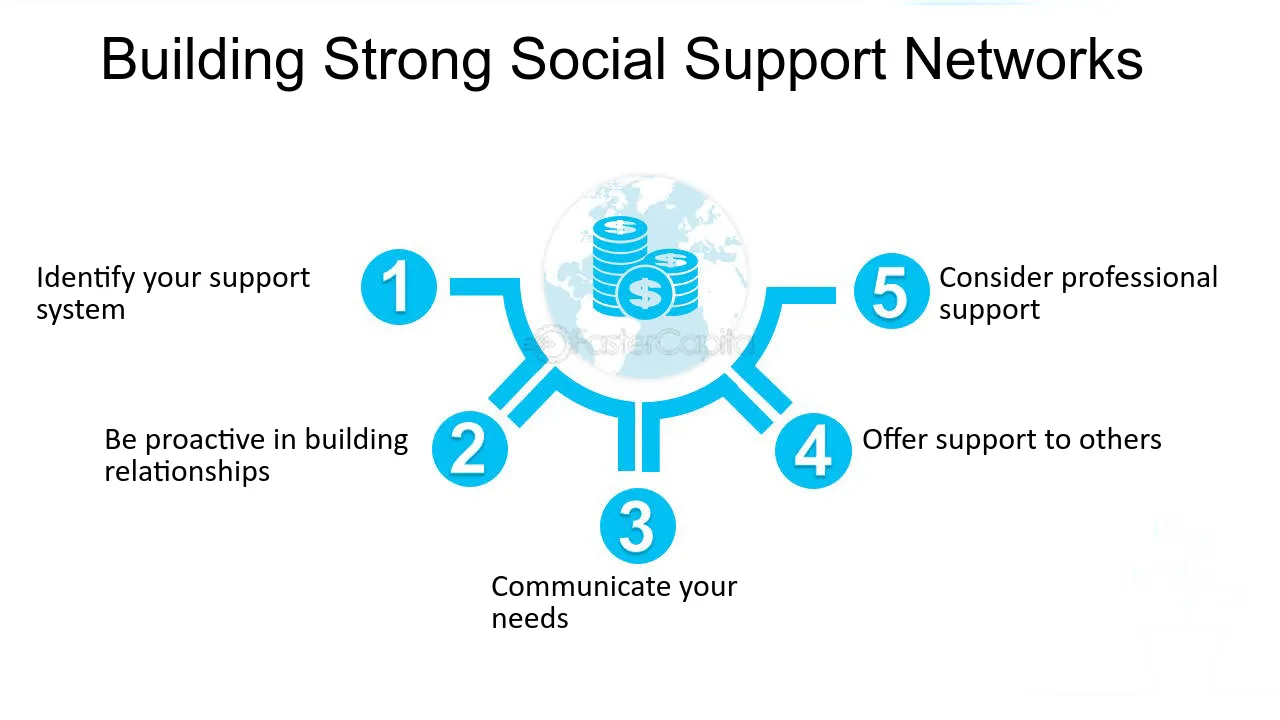
Actionable Tip: Make time for relationships that matter. Schedule weekly catch-ups with friends or family, and be present when you’re with them—no checking emails or thinking about work. The more you nurture your social connections, the more balanced and fulfilled you’ll feel, even during high-stress periods at work.
4. Build Resilience Through Learning
Here’s something that most people don’t realize—burnout can also come from stagnation. If you’re doing the same thing day in and day out with no personal growth, you can start feeling burnt out simply because you’re bored or unchallenged.
Actionable Tip: Keep learning, even if it’s outside of your job. Take a course, attend a workshop, or start reading about topics that inspire you. Expanding your knowledge and skills will keep you energized, engaged, and more resilient to stress.
The Role of Purpose in Preventing Burnout
Burnout often happens when you’re working hard but can’t see the bigger picture. You’re checking off tasks, putting in hours, but deep down, it feels empty. When your work lacks meaning, it’s easy to fall into the burnout trap, even if you’re managing your stress levels and workload.
1. Align Your Work with Your Values
One of the most effective ways to prevent burnout is to find work that aligns with your personal values. When your job feels connected to something bigger than just deadlines and paychecks, it’s easier to stay motivated and avoid burnout. Purpose gives you the fuel to keep going even when things get tough. It doesn’t mean your job has to be saving the world, but it should at least resonate with what you care about.
Actionable Tip: Take time to reflect on your core values. What matters most to you—creativity, helping others, learning, or something else? Then evaluate how your current role aligns with those values. If you find a disconnect, consider how you can adjust your role or focus on projects that are more in line with what drives you.
2. Focus on Impact, Not Just Productivity
The grind of focusing on constant productivity—just doing more for the sake of doing more—leads straight to burnout. Instead, shift your mindset to focus on the impact of your work. When you know your work is making a difference, even in small ways, you feel more fulfilled. And that fulfillment is what helps prevent burnout.
Actionable Tip: At the end of each week, reflect on what impact you’ve had. What project did you contribute to that made a difference? What small wins did you achieve? This exercise helps you shift away from the constant push for productivity and instead focus on the value of your work.
3. Create Purpose in Your Current Role
Not everyone is in a job they feel 100% passionate about, and that’s okay. The key is finding ways to create purpose in whatever role you’re in. Sometimes it’s about connecting your day-to-day tasks with the bigger picture or finding opportunities to grow and learn within your role.
Actionable Tip: Start by identifying areas in your current job where you can take more ownership. Maybe you can lead a new project, mentor a colleague, or offer a fresh idea that contributes to the company’s mission. The more you take ownership and find ways to connect your work to a greater purpose, the more motivated and energized you’ll feel.
4. Consider a Career Pivot If Needed
As I talked about earlier, if your current role or industry doesn’t align with your sense of purpose, it might be time to explore other career paths. Feeling stuck in a job that doesn’t resonate with your values will lead to burnout, no matter how well you manage stress.
Statistically, some of the most important factors in job satisfaction are:
- Respect
- Meaning
- Salary
- Autonomy
- Opportunity
- Recognition
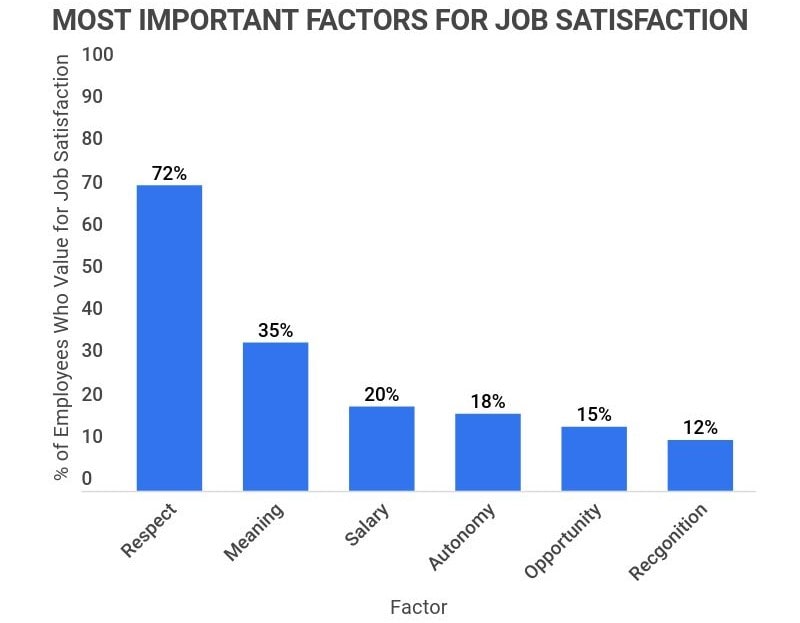
Actionable Tip: Start by researching careers that align more with your values and interests. Talk to people in those industries, take courses, and begin exploring options that give you a greater sense of purpose. Even small steps can lead to major breakthroughs.
Learn to Delegate and Let Go
Burnout doesn’t always come from doing too much—it often comes from doing everything yourself. The truth is, you don’t have to handle it all. In fact, trying to do so is one of the fastest ways to crash. Delegating tasks isn’t just about lightening your load; it’s about creating space for high-impact work and keeping your energy where it matters.
1. Identify Tasks You Don’t Need to Be Doing
Start by taking a hard look at everything on your plate. Are you spending too much time on tasks that someone else could handle? Many professionals fall into the trap of thinking they need to manage everything themselves to ensure it’s done “right.” But in reality, holding onto too much prevents you from focusing on the bigger picture.
Actionable Tip: Write down every task you do in a week and mark the ones that could be done by someone else. Then, figure out how to hand off those tasks. Whether you delegate to a team member or outsource it altogether, the goal is to create more room for high-value work.
2. Empower Your Team or Colleagues
Delegating effectively isn’t just about dumping tasks on someone else; it’s about empowering the people around you to take ownership. When you delegate with trust, you’re building a stronger team—and in turn, creating a system where you can rely on others when things get overwhelming.
Actionable Tip: When delegating, be clear about the outcomes but let your team or colleagues take charge of how they get there. Provide guidance but avoid micromanaging. Trust them to deliver, and over time, you’ll feel more comfortable letting go of tasks that don’t need your constant attention.
3. Set Clear Expectations
One of the main reasons people hesitate to delegate is the fear that the task won’t be done to their standards. But most of the time, this is just a matter of communication. If you’re clear about your expectations upfront, the chances of things going wrong are much lower.
Actionable Tip: When you delegate, give clear instructions and set specific deadlines. Make sure the person knows the result you’re looking for, not just the task itself. This minimizes misunderstandings and ensures the work is done right without you having to micromanage.
4. Let Go of Perfectionism
Perfectionism is a major roadblock when it comes to delegation and a direct path to burnout. If you’re always tweaking, revising, or redoing work because it’s not “perfect,” you’re adding unnecessary stress. Remember, done is better than perfect. In fact, perfectionism is often a sign of burnout itself—constantly chasing flawless results leads to exhaustion and stress.
Actionable Tip: The next time you feel the urge to fix or redo a delegated task, pause. Ask yourself, “Is it good enough to move forward?” If the answer is yes, let it go. Progress beats perfection every time when it comes to sustainable work habits.
Build Systems for Sustainable Success
Burnout isn’t just about working hard; it’s about working inefficiently. You could be putting in endless hours and still feel like you’re spinning your wheels. The problem? No systems.
Systems are what help you manage your time, energy, and focus in a way that prevents burnout and keeps you productive long-term. Without them, you’re just reacting to fires, which leads to exhaustion and burnout.
1. Automate Repetitive Tasks
If you’re doing the same things over and over again, you’re wasting time that could be spent on higher-value work. Automation is one of the easiest ways to free up your time and reduce mental fatigue. We’re in the age of artificial intelligence and you need to take advantage of that.
Actionable Tip: Look for areas where automation can save you time—whether it’s email responses, scheduling, or data entry. Tools like Zapier, Calendly, or even email templates can streamline your workflow and give you back hours each week. Start small and gradually automate more as you discover the areas where you can offload repetitive tasks.
2. Create Routines That Work for You
Routines aren’t about rigid schedules—they’re about creating a flow that allows you to stay focused without burning out. When you create a daily routine, you’re removing decision fatigue and conserving mental energy for the tasks that matter most.
Actionable Tip: Break your day into time blocks that allow for deep work, breaks, and administrative tasks. For example, set aside the first 2-3 hours of your day for your most important tasks, when your energy is highest. Then use the afternoon for meetings or lower-energy activities. Creating a routine that works with your energy levels can increase productivity and prevent burnout.
3. Track Your Energy, Not Just Your Time
Time management is essential, but energy management is the real game-changer. Some tasks drain you more than others, and burnout often happens when you don’t account for how much energy you’re expending on certain activities. If you’re spending your best energy on low-impact tasks, burnout is inevitable.
Actionable Tip: Start tracking how you feel after different types of work. At the end of the day, ask yourself: What tasks gave me energy, and what tasks drained me? Use this insight to adjust your schedule. Do the most energy-consuming tasks when you’re fresh, and save less demanding work for later in the day.
4. Use Technology to Stay Focused
Distractions are productivity killers, and constantly shifting your focus leads to mental fatigue. A report from UC Irvine found that it takes an average of 23 minutes to regain focus after being interrupted. Multiply that by the number of distractions you face daily, and it’s no wonder burnout hits hard. Using technology to eliminate distractions can help you stay on task and protect your mental energy.
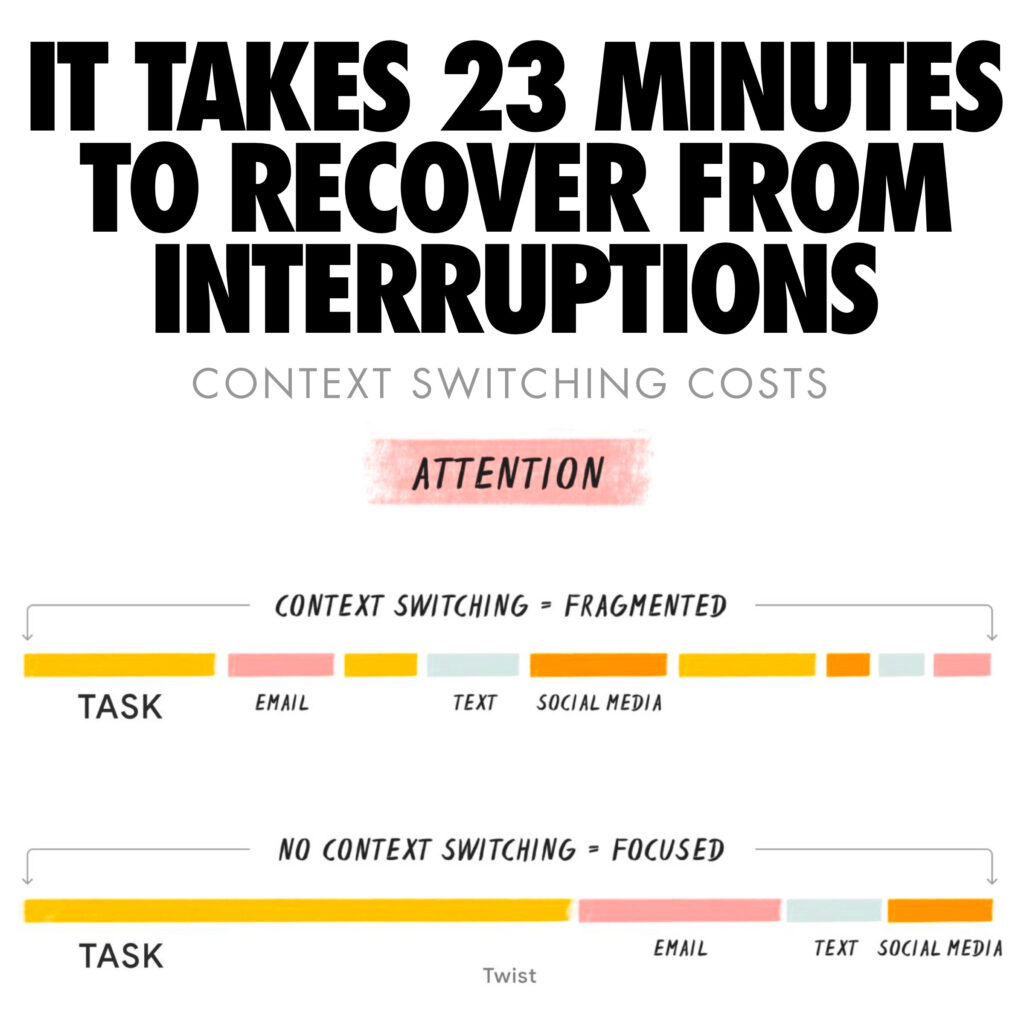
Actionable Tip: Use focus apps like Freedom, Cold Turkey, or StayFocusd to block distracting websites during work hours. Turn off unnecessary notifications on your phone and computer. Create an environment that supports deep work, so you’re not constantly switching between tasks or getting pulled into distractions.
Final Thoughts on Preventing Burnout at Work
Burnout is more than just a buzzword—it’s a legitimate challenge that affects millions of professionals. But it doesn’t have to be your story. By taking intentional, consistent actions, you can reclaim your energy, boost your productivity, and find satisfaction in your work again. Remember, the goal isn’t just to stop feeling burnt out; it’s to build a fulfilling career that complements a rich, balanced life.
Now is the time to take that first step. Your well-being is worth it. If you’re serious about transforming your mindset and income, explore my Marketing Pro Academy.














